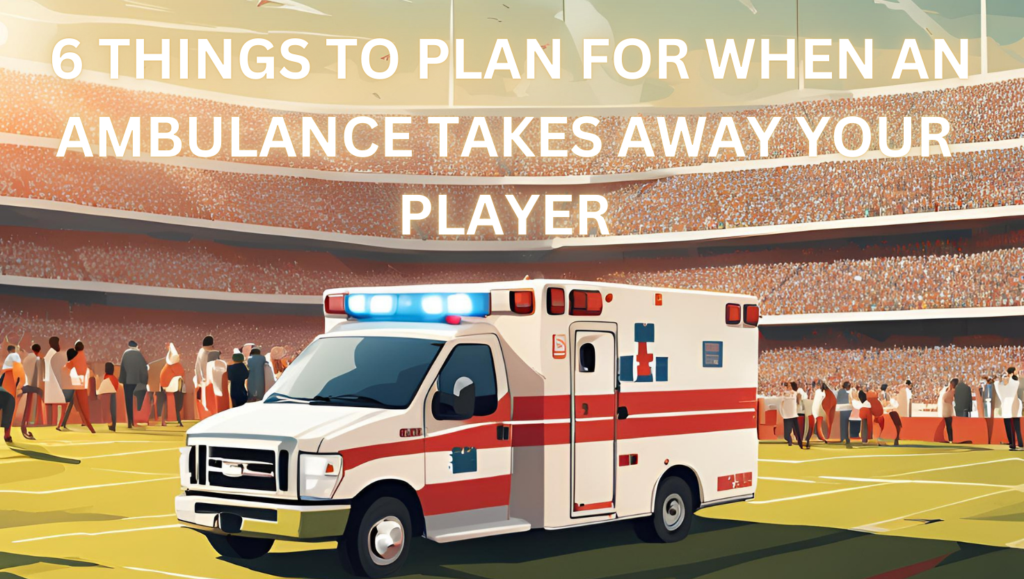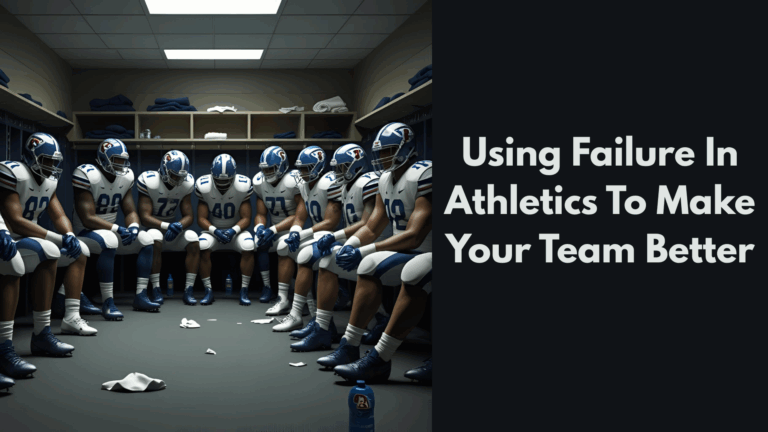
One of my favorite teams, and best teams, that I had the fortune of leading was way back in 2004 at Linfield Christian. I was at Linfield from 2001-2006. They had been to the CIF Semi Finals just two times in the 40 years leading up to my tenure there; we reached the Semis twice in three years! We had a nice little run there. I started at Linfield the same exact time as the Class of 2005 did; so we had a great connection with those seniors during their last season: 2004.
We were ranked #1 in the Division for a good chunk of the season, and entered the CIF Semi Final game vs Rio Hondo Prep with a tremendous record of 10-1-1. (I hate that last 1, a tie vs. San Diego Francis Parker; the only tie of my Head Coaching career. It finished 21-21, and by Southern Section rules we should have played out the tie. The game was at home, in the Southern Section. But Parker was a San Diego team, and they didn’t play out ties back then. So, the officials went running out of there, yelling over their shoulders “San Diego doesn’t play out ties,” as the Parker Head Coach and I sat there looking at each other saying “What in the world?!” Those officials were gone FAST! We wanted to just play it out but our ADs wouldn’t let us.)
Rio Hondo was 10-2, we were 10-1-1. A GREAT matchup for us, on the road at Rio’s place. We were very excited to perhaps win that game and have a shot at the CIF Championship against our League rival Hamilton!
We came out very excited and “pumped up.” In fact, my wife still tells the story that she turned to my parents and some parents of our players around her in the stands and they were all talking about how dialed in and excited we looked!
At the time, ALL of the Nation seemed to be infatuated with the Poker craze. Poker tournaments were just taking stage on TV recently, and it was all the rage. Our kids played poker at lunch in my room all the time (not with real money!). So, my Defensive Coordinator and I set up a little poker table in the locker room, and I gave maybe my best pregame speech ever, about how we had to go ALL IN that night! Kids were jumping around all over as I pushed my poker chips to the middle of the table, and then flipped the table when I “won the hand!”
Our team was ROCKING AND ROLLING by the time of kickoff: exactly my goal!
And then . . . . . . . . . . .
Trevor Caines was not getting up.
Trevor was a 5’10” 160 pound Receiver and Defensive Back. Not a lot of meat to the bones on Trevor Time. A great little possession receiver, with VERY good hands. So, he was on our kickoff return team to catch pooches on the sideline, something that we had seen Rio do that year.
Trevor Caines was not getting up after the very first kickoff. It was right near our sidelines, not 10 yards from us, Trevor seemed glued to the damp grass.
Our Athletic Trainer and I went out to see him. Tough little Trevor was in tears when we got there. He wasn’t breathing well, and couldn’t talk. Trevor ended up having some broken ribs and a punctured lung.
But we didn’t know the extent of his injuries. Medical personnel and Administration at the game decided to call an ambulance.
This was just my second year as a Head Coach. I had never encountered this: an ambulance coming to the field, driving all the way next to my player, to take him away. I wasn’t prepared for what this would do to our team who was just SKY HIGH a few minutes ago.
That SKY HIGH team at the peak of emotion of energy and euphoria at kickoff fell as sharp as a team could, and as far as any team I’ve ever seen fall. It soon felt like a library on our sidelines: calm and quiet. Eerily quiet. Eerily calm. Flat.
Rio would go on to beat us 38-15. We never recovered from that first kickoff, and 6’2” 220 pound Landon Goodwell (one of the best backs I’ve been on the same field as) averaged over 10 yards a carry for 198 yards and 2 tuddies!
Here is what I learned from that 30 minute ambulance delay, and parts of the plan that I put together from that night forward.
When an ambulance is on the field tending to an injured player for an extended period like 30 minutes, a staff should take the following steps to manage the situation effectively:
Ensure Player Safety First: Allow the medical personnel to work without interference. The coach should avoid pressuring the ambulance crew or rushing the process, as the player’s health is the top priority.
Communicate with Officials: That night, the officials went to the home sidelines, and just sat there. I didn’t talk with them at all about the plan to return to play. I should have communicated with them. Check in with the officials to understand how the delay will affect the game (e.g., stoppage time, rescheduling, or rule-specific procedures). This keeps you and your team informed and prepared for next steps.
Keep the Team Focused: This was where I really dropped the ball as the Head Coach. I didn’t know what to do. So, we basically just sat there on our sidelines, and watched them working on our teammate and brother. Looking back, and what I planned for in the future was to remove them from that immediate scene. Gather the players and keep them engaged. This could involve:
-
- A brief huddle to reassure them and maintain morale, especially if the injury is serious
- Light stretching or drills (if space allows) to stay warmup up without disrupting the medical team
- If appropriate, a tactical discussion to refocus their attention on the game plan.
Monitor Team Emotions: Again, something I failed to do was help our players manage their emotions. I stood in a circle with our coaches, and started game planning without Trevor. We made sure to cross his name off all of the Special Teams, let his backups know, etc. Make sure to gauge how the injury is affecting the players emotionally. Some players may be shaken—offer calm leadership and support. Encourage them to stay composed and respect the process.
Adjust Game Strategy: Use the downtime to reassess the game plan. If the injured player is a key contributor, mentally prepare substitutions or positional shifts. Discuss these quietly with assistant coaches or team captains.
Stay aware of time and be ready for the restart: Track how long the delay has lasted (in this case, 30 minutes) and anticipate how it might affect momentum or stamina. Prepare the team for a potentially abrupt restart. Again, this is where I failed my staff and kids. I think the officials gave us a 3 minute warning once the ambulance was pulling away. All of a sudden our team went from sitting on benches to warming up and playing. That was a tall task, and we came out totally flat.
Your role as the Head Coach is to balance sensitivity to the injured player’s situation with maintaining team readiness, all while adhering to the flow of the game as directed by officials. Every situation is unique, so adaptability is key.
Chris Fore is a veteran educator from Southern California. He has a Masters in Athletic Administration, is a Certified Athletic Administrator and has served as the President of the California Coaches Association. Fore coached high school football for 16 years (8 as a Head Coach) and JUCO football in his last year, before becoming an Administrator. He is a court-certified Expert Witness in athletically-based court cases, and is the CEO of Eight Laces Consulting. Eight Laces specializes in helping coaches nationwide in their job search process, and consults schools to fill their vacant positions. Fore has been named to the Hudl Top 100 Coaches, and the Top 5 Best High School Football Coaches to follow by MaxPreps. Follow him!

